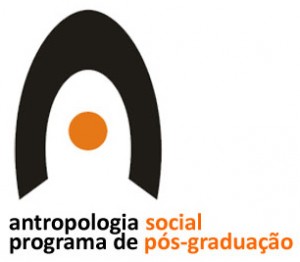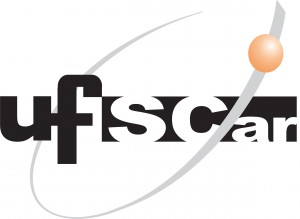Caixa de Pandora
estilo alto-rio-negrino
DOI:
https://doi.org/10.52426/rau.v6i1.115Palavras-chave:
corpo, ornamentação, riqueza, troca, ritualResumo
Neste capítulo, proponho que o estilo relativamente uniforme da vestimenta cerimonial masculina, compartilhado pelos povos Tukano Oriental e Arawak do Alto Rio Negro, é uma das facetas de um sistema ritual que dá coerência ao sistema social regional. Partindo de dados de grupos Tukano Oriental, este capítulo analisa a ornamentação corporal de perspectivas diferentes, mas inter-relacionadas: adornos como bens herdados personi•icados e objetos de valor relacionados a diferenças em termos de poder e status e que entram em formas restritas de troca – caixas de enfeites como operadores cosmológicos mediando tempos ancestral e humano; enfeites como aspectos de personhood e selfhood ligados à autoapresentação e auto-ornamentação; a relação complementar entre os enfeites e a pintura corporal; as conotações indexicais e simbólicas de cores e materiais; as ligações entre ornamentação e dança, e entre política e estética. Tendo como contrapartida teórica a discussão sobre a auto-ornamentação na Melanésia, argumento que lá, onde objetos de valor que enfeitam o corpo e que participam de trocas rituais são também sujeitos de comentários simbólicos esotéricos, a análise política, econômica e cosmológica
não pode ser deixada em segundo plano.
Referências
ÅRHEM, Kaj. 1981. Makuna Social Organization. Stockholm: Almqvist & Wiksell International.
BIDOU, Patrice. 1976. “Les ils de l’Anaconda Céleste (les tatuyo): Étude de la structure socio-politique”. Thêse de Doctorat en ethnologie, Laboratoire d’Anthropolgie Sociale, Paris.
______. 1996. “Trois mythes de l’origine du manioc (Nord-Ouest de l’Amazonie)”. L’Homme, XXXVI(140):63-79.
CAMPBELL, Shirley. 2001. “The captivating agency of art: many ways of seeing”. In: Christopher Pinney & Nicholas Thomas (ed.), Beyond Aesthetics: Art and the Technologies of Enchantment. Oxford: Berg.
CHERNELA, Janet. 1996. The Wanano Indians of the Brazilian Amazon. Austin: University of Texas Press.
COELHO DE SOUZA, Marcela. 1995. “Da complexidade do elementar: para uma reconsideração do parentesco do Xingu”. In: Eduardo Viveiros de Castro (org.), Antropologia do parentesco: estudos ameríndios. Rio de Janeiro: Editora UFRJ.
CORREA, François. 1989. Relatos míticos kabiyari. Bogotá: SCC.
______ 1992. Relatos míticos cubeo. Bogotá: Servicio Colombiano de Comunicación.
______. 1996. Por el camino de la anaconda remédio. Bogotá: Tercer Mundo.
______. 1997. Los Kuwaiwa creadores del universo, la sociedad y la cultura. Quito: Abya-Yala.
D’ALLEVA, Anne. 2001. “Captivation, representation, and the limits of cognition: Interpreting metaphor and metonymy in Tahitian Tamau”. In: Christopher Pinney & Nicholas Thomas (ed.), Beyond Aesthetics: Art and the Technologies of Enchantment. Oxford: Berg.
DESCOLA, Philippe. 2001. “Genres of gender: local models and global paradigms in the comparison of Amazonia and Melanesia”. In: Thomas Gregor & Donald Tuzin (ed.), Gender in Amazonia and Melanesia. Berkeley: University of California Press.
DIAKURU (Américo Castro Fernandes); KISIBI (Dorvalino Moura Fernandes). 1996. A mitologia sagrada dos Desana-Wari Dihputiro Põrã. São Gabriel da Cachoeira: UNIRT/FOIRN.
ERIKSON, Philippe. 1986. “Altérité, tatouage, et anthropophagie chez les Pano: la belliqueuse quête du soi”. Journal de la Société des Américanistes de Paris, 73:185-210.
GELL, Alfred. 1998. Art and Agency. Oxford: Oxford University Press.
GILLISON, Gillian. 1981. “Images of nature in Gimi thought”. In: Carol MacCormack & Marilyn Strathern (ed.), Nature, Culture and Gender. Cambridge: Cambridge University Press.
______. 1993. Between Culture and Fantasy. Chicago: Chicago University Press.
GOLDMAN, Irving. 1979. The Cubeo. Urbana: University of Illinois Press.
GUSS, David. 1989. To Weave and Sing. Berkeley; London: University of California Press.
HECKENBERGER, Michael. 2005. The Ecology of Power. Routledge: New York.
HELMS, Mary W. 1993. Craft and the Kingly Ideal. Austin: University of Texas Press.
HOWARD, Catherine. 1991. “Fragments of the heavens: feathers as ornaments among the Waiwai”. In: Ruben E. Reina & Kenneth M. Kensinger (ed.), The Gift of Birds. Philadelphia: University Museum, University of Pennsylvania.
HUGH-JONES, Christine. 1979. From the Milk River. Cambridge: Cambridge University Press.
HUGH-JONES, Stephen. 1979. The Palm and the Pleiades. Cambridge: Cambridge University Press.
______. 1982. “The Pleiades and Scorpius in Barasana cosmology”. In: Anthony F. Aveni & Gary Urton (ed.), Ethnoastronomy and Archaeoastronomy in the American Tropics, Annals of the New York Academy of Sciences, 385:183-201. New York: New York Academy of Sciences.
______. 1992. “Yesterday’s luxuries, tomorrow’s necessities: business and barter in Northwest Amazonia”. In: Caroline Humphrey & Stephen Hugh-Jones (ed.), Barter, Exchange and Value. Cambridge: Cambridge University Press.
______. 1995. “Back to front and inside out: the androgynous house in NW Amazonia”. In: Janet Carsten & Stephen Hugh-Jones (ed.), About the house. Cambridge: Cambridge University Press.
______. 1996. “Bonnes raisons ou mauvaise conscience ? De l’ambivalence de certains Amazoniens envers la consommation de la viande”. Terrain, (26):123-148.
______. 2001. “The gender of some Amazonian gifts: an experiment with an experiment”. In: Thomas Gregor & Donald Tuzin (ed.), Gender in Amazonia and Melanesia. Berkeley: University of California Press.
______. 2006. “The substance of Northwest Amazonian names”. In: Gabriele vom Bruch & Barbara Bodenhorn (ed.), The Anthropology of Names and Naming. Cambridge: Cambridge University Press.
______. 2009. “The fabricated body: objects and ancestors in NW Amazonia”. In: Fernando Santos-Granero (ed.), The Occult Life of Things. Tucson: University of Arizona Press.
McEWAN, Colin; BARRETO, Cristiana; NEVES, Eduardo. (ed.). 2001. Unknown Amazon. London: British Museum Press.
McKINNON, Susan. 2000. “The Tanimbarese Tavu: The Ideology of Growth and the Material Con igurations of Hierarchy”. In Susan D. Gillespie & Rosemary Joyce. (ed.), Beyond Kinship. Philadelphia: University of Pennsylvania Press.
MENTORE, George. 1993. “Tempering the social self: body adornment, vital substance, and knowledge among the Waiwai”. Journal of Archeology and Anthropology, 9:22-23.
MONTAGNER, Delvair. 1986. “Simbolismo dos adornos corporais Marúbo”. Revista do Museu Paulista, 31:7-41.
MUNN, Nancy. 1986. The Fame of Gawa. Cambridge: Cambridge University Press.
O’HANLON, Michael. 1989. Reading the Skin. London: British Museum Press.
______. 1992. “Unstable images and second skins: artefacts, exegesis and assessments in the New Guinea Highlands”. Man, 27(3):587-608.
RIVIÈRE, Peter G. 1984. Individual and society in Guiana. Cambridge: Cambridge University Press.
SEEGER, Anthony. 1975. “The meaning of body ornaments: a Suya example”. Ethnology, 14(3):211-224.
STRATHERN, Marilyn 1988. The Gender of the Gift. Berkeley; London: University of California Press.
STRATHERN, Andrew; STRATHERN, Marilyn. 1971. Self-decoration in Mount Hagen. London: Backworth.
TURNER, Terence. 1969. “Tchikrin: a Central Brazilian tribe and its symbolic language of bodily adornment”. Natural History, 78:50, 52, 57-59, 70.
______. 1991. “‘We are parrots’, ‘twins are birds’: Play of tropes as operational structure”. In: James W. Fernandez (ed.), Beyond Metaphor. Stanford: Stanford University Press.
______. 1995. “Social body and embodied subject: bodiliness, subjectivity and sociality among the Kayapó”. Cultural Anthropology, 10(2):143-179.
UMÚSIN PANLÕN KUMU (Firmiano Arantes Lana); TOLAMÃN KENHÍRI (Luiz Gomes Lana). 1980. Antes o mundo não existia: Mitologia dos antigos Desana Këhíripõra. São Gabriel: UNIRT/FOIRN.
VERSWIJVER, Gustaaf. 1992. Kaiapó amazonie: plumes et peintures corporelles. Gent: Snoeck-Ducaju & Zoon.
VIVEIROS DE CASTRO, Eduardo. 1998. “Cosmological deixis and Amerindian perspectivism”. Journal of the Royal Anthropological Institute 4(3):469-488.
WAGNER, Roy. 1991. “The fractal person”. In: Marilyn Strathern & Maurice Godelier (ed.), Big Men and Great Men. Cambridge: Cambridge University Press.
WEINER, Annette. 1992. Inalienable possessions. Berkeley; Oxford: University of California Press.
WILSON, Peter. 1988. The Domestication of the Human Species. London: Yale University Press.
Downloads
Publicado
Como Citar
Edição
Seção
Licença
Copyright (c) 2014 Revista de Antropologia da UFSCar

Este trabalho está licenciado sob uma licença Creative Commons Attribution-ShareAlike 4.0 International License.





